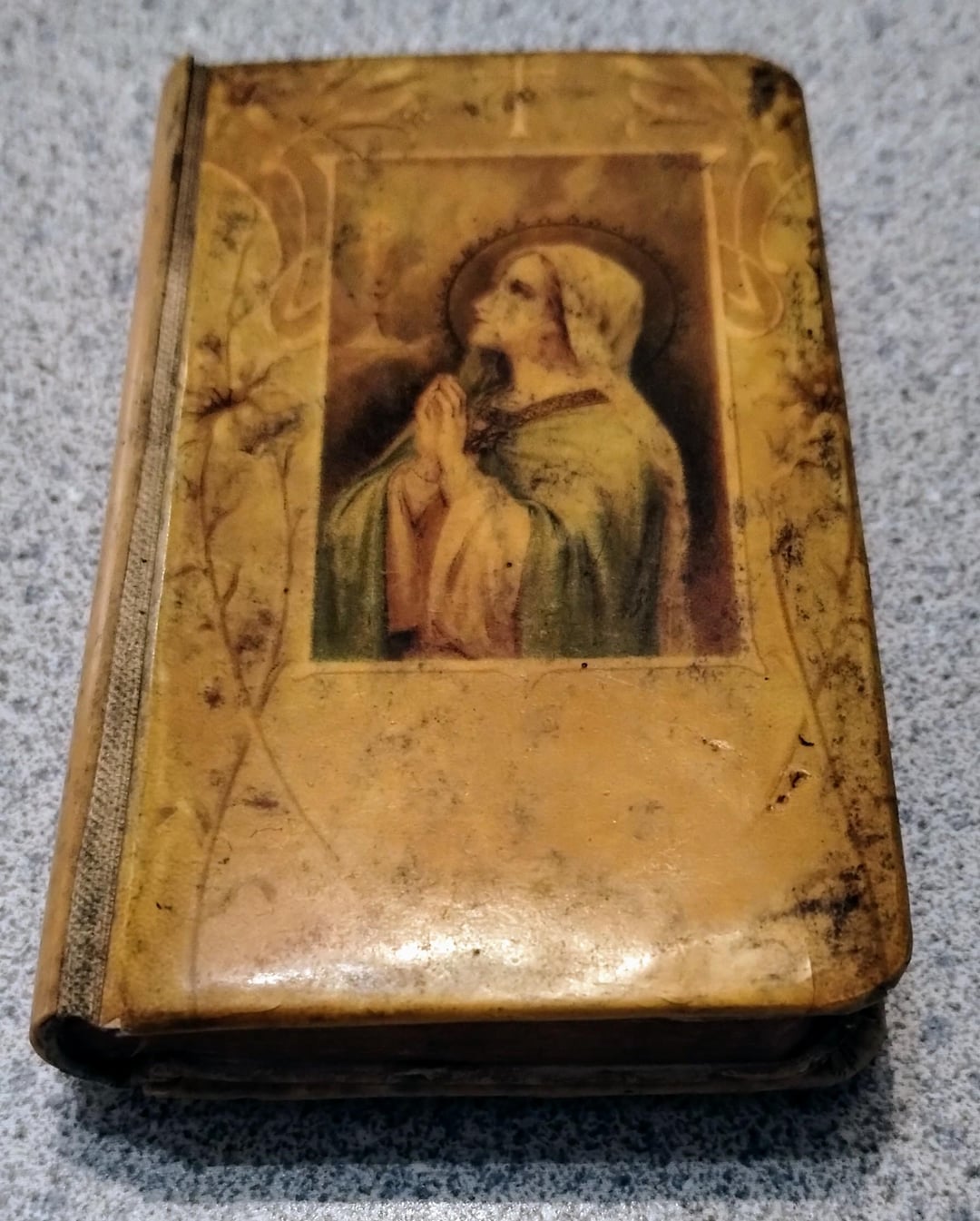
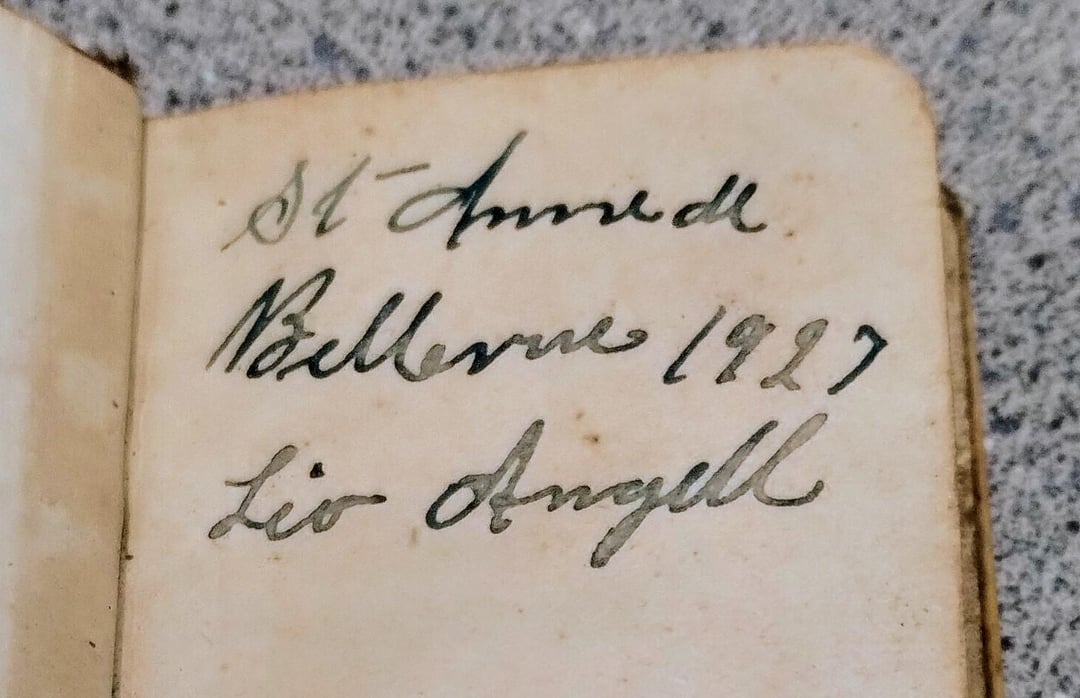
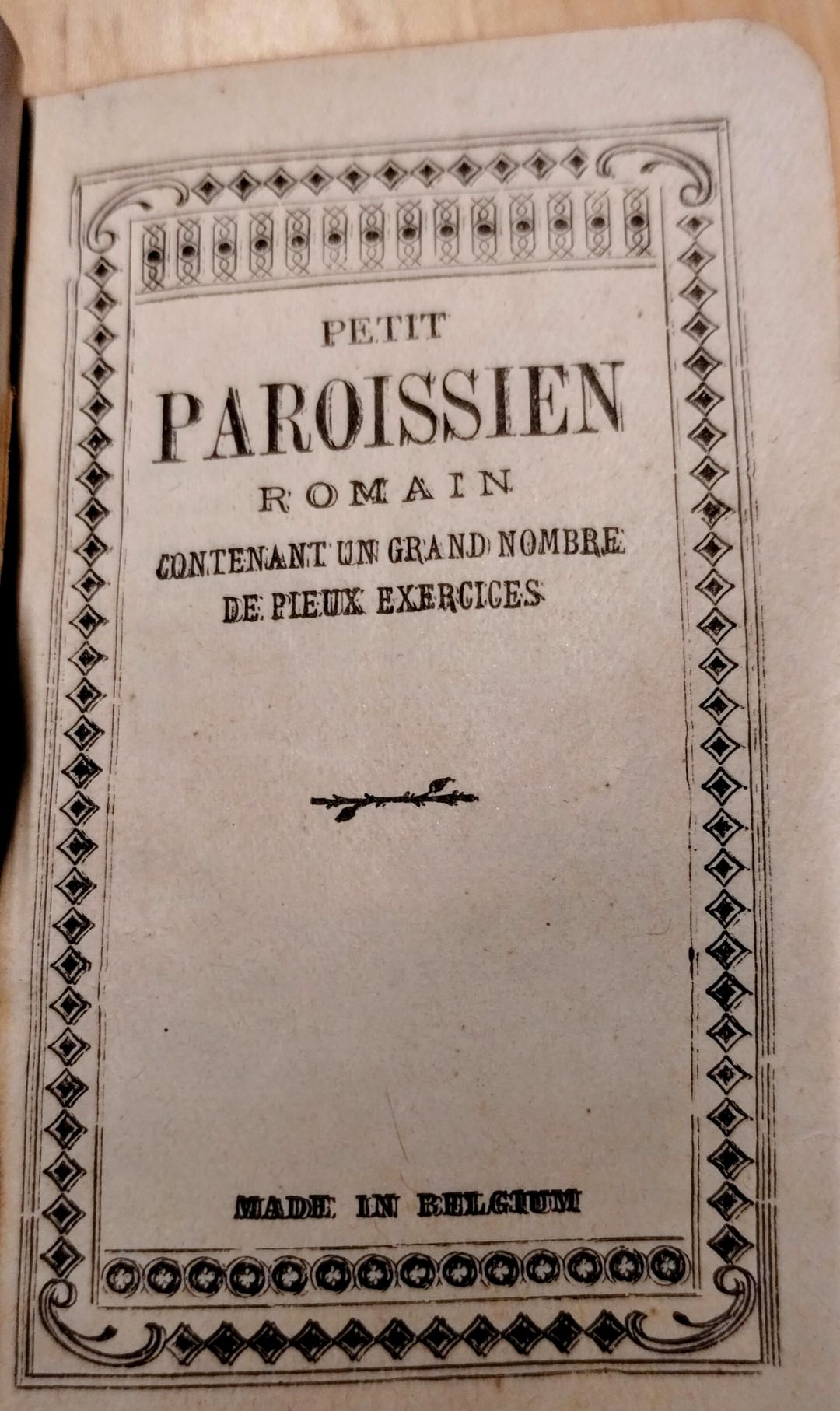
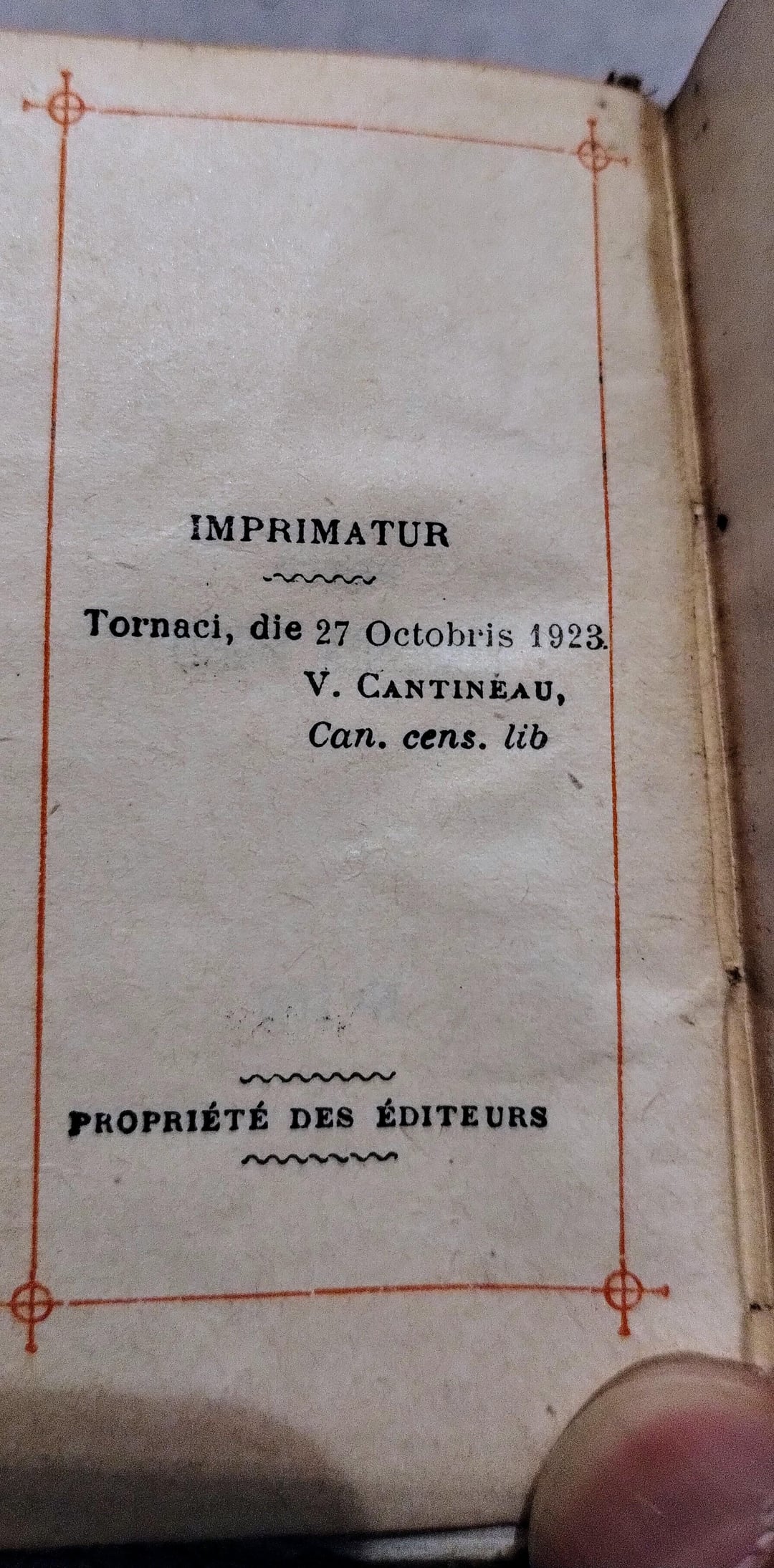
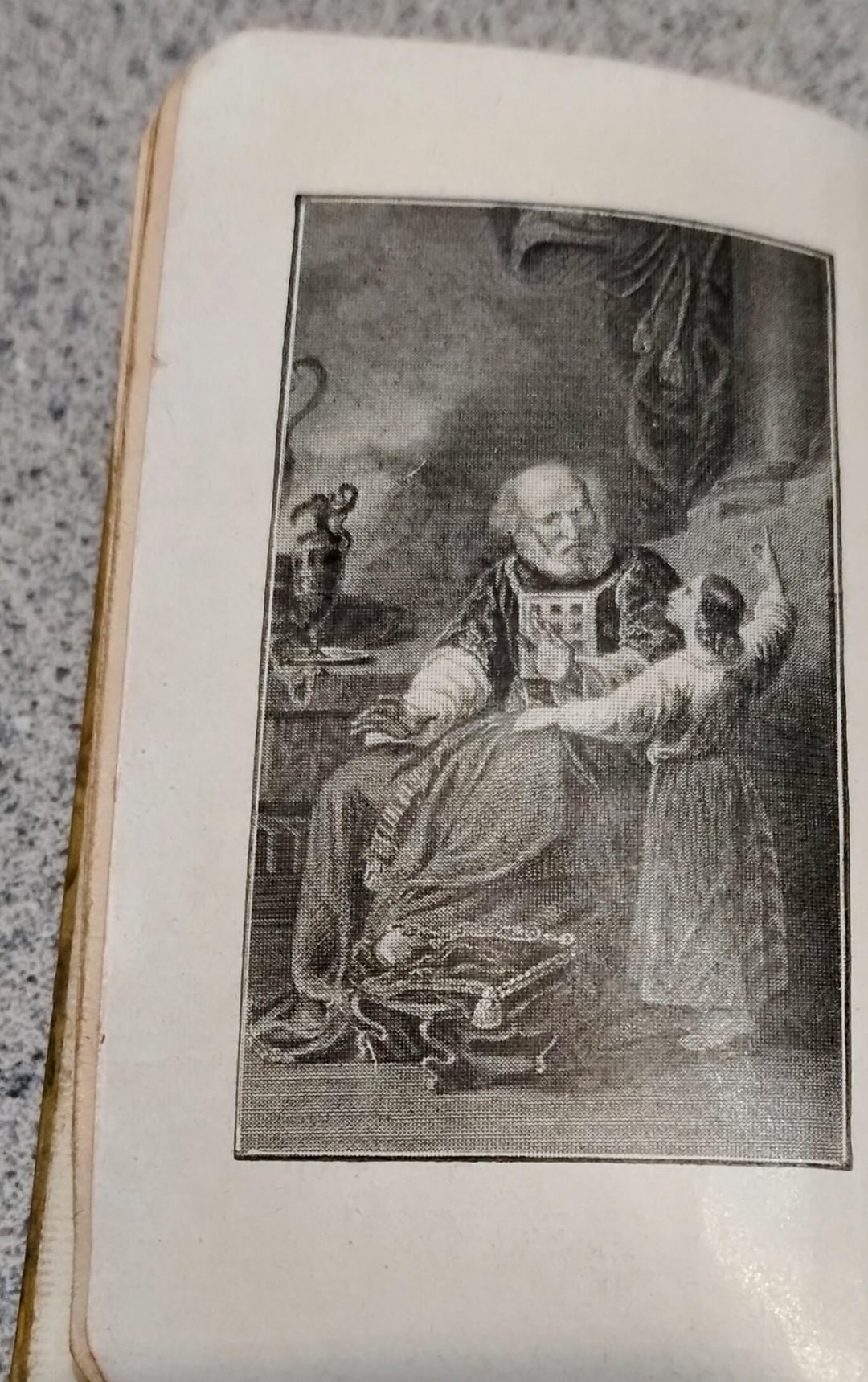
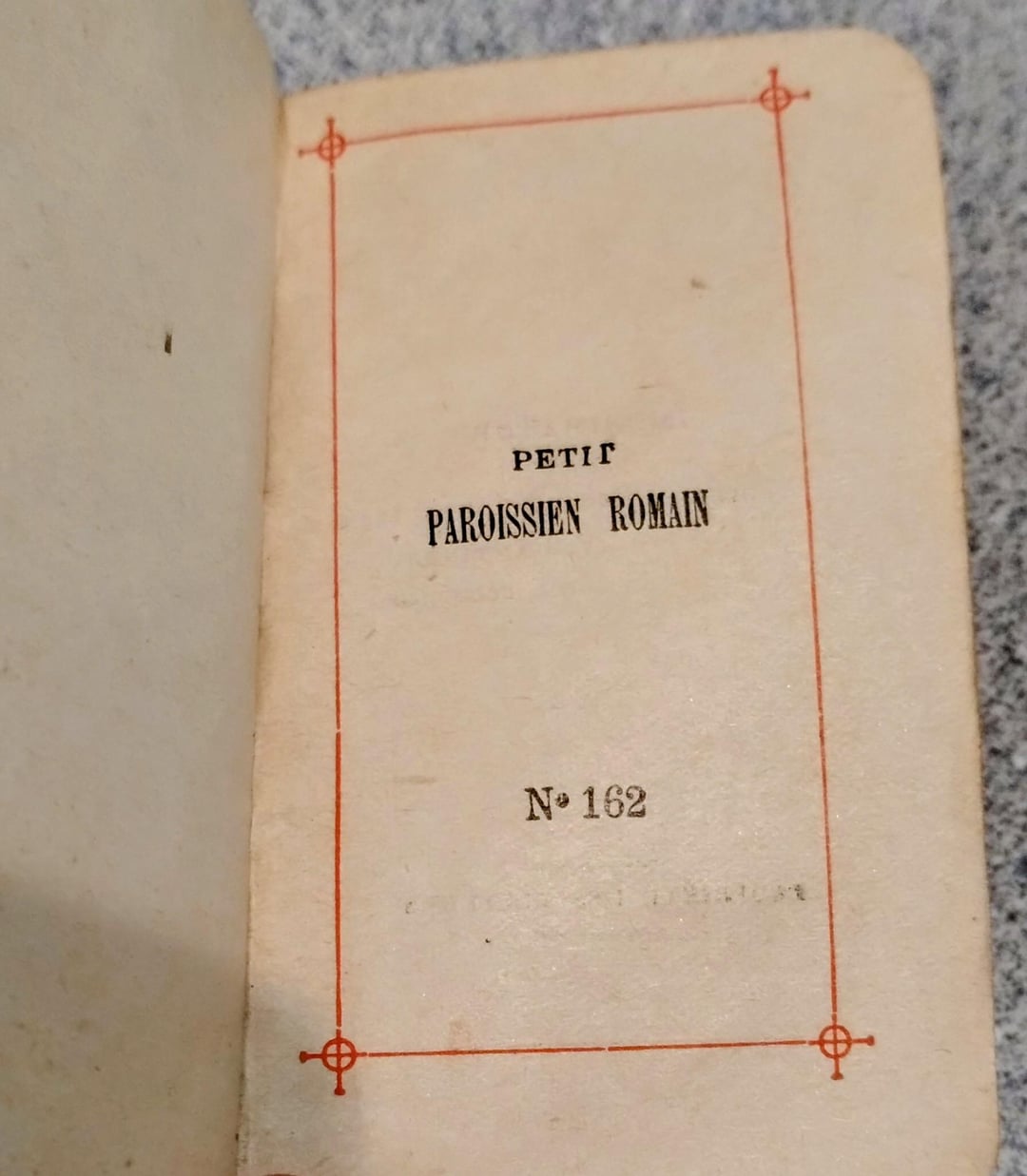

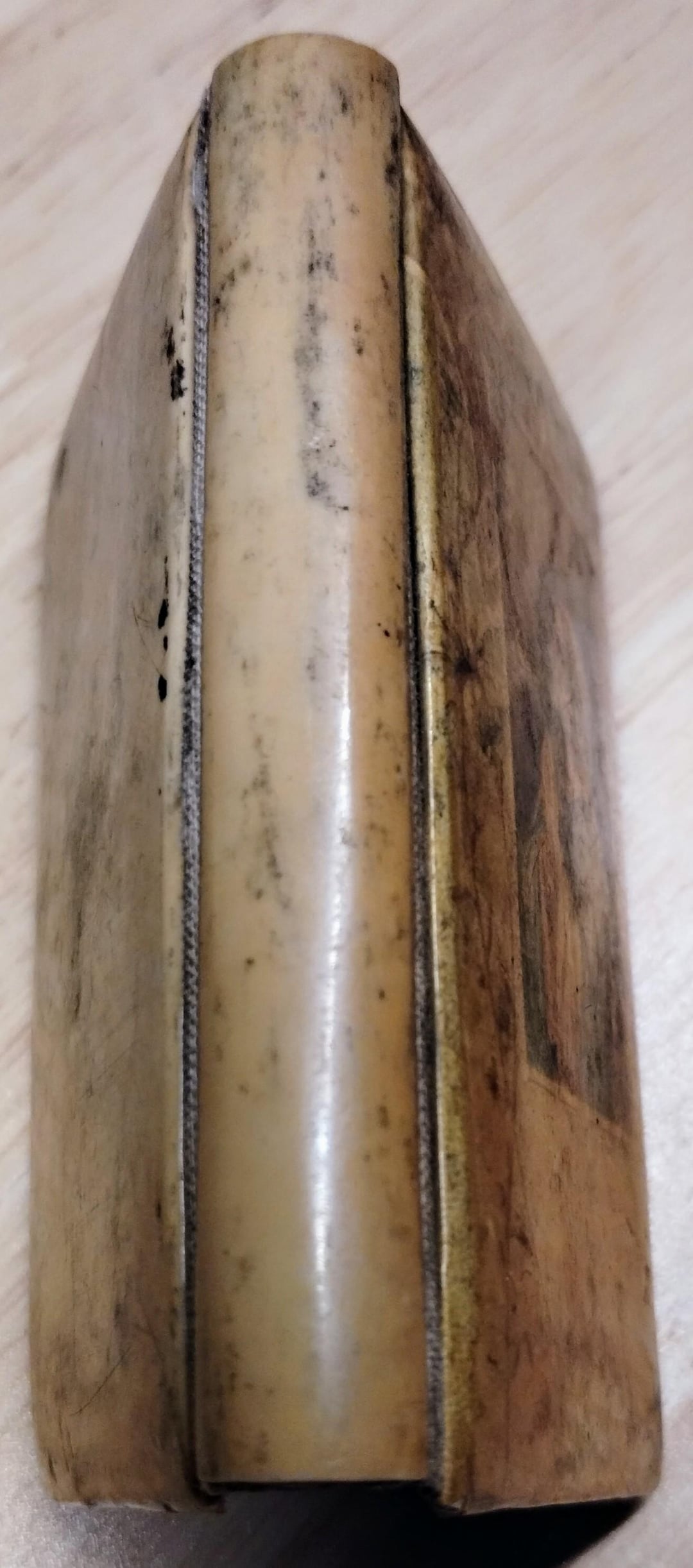
Je me fais un grand plaisir d'essayer de trouver des informations sur celui-ci! Il me manque plusieurs années d'existence pour connaître la personne qui l'a signé et pour décortiquer l'écriture. En fait, tout ce que vous connaissez de l'objet m'intéresse.
I'm very excited to try to find information about it! I'm a few years away from knowing who signed it and deciphering the handwriting. In fact, I'm interested in anything you know about the object.
by Admirable04
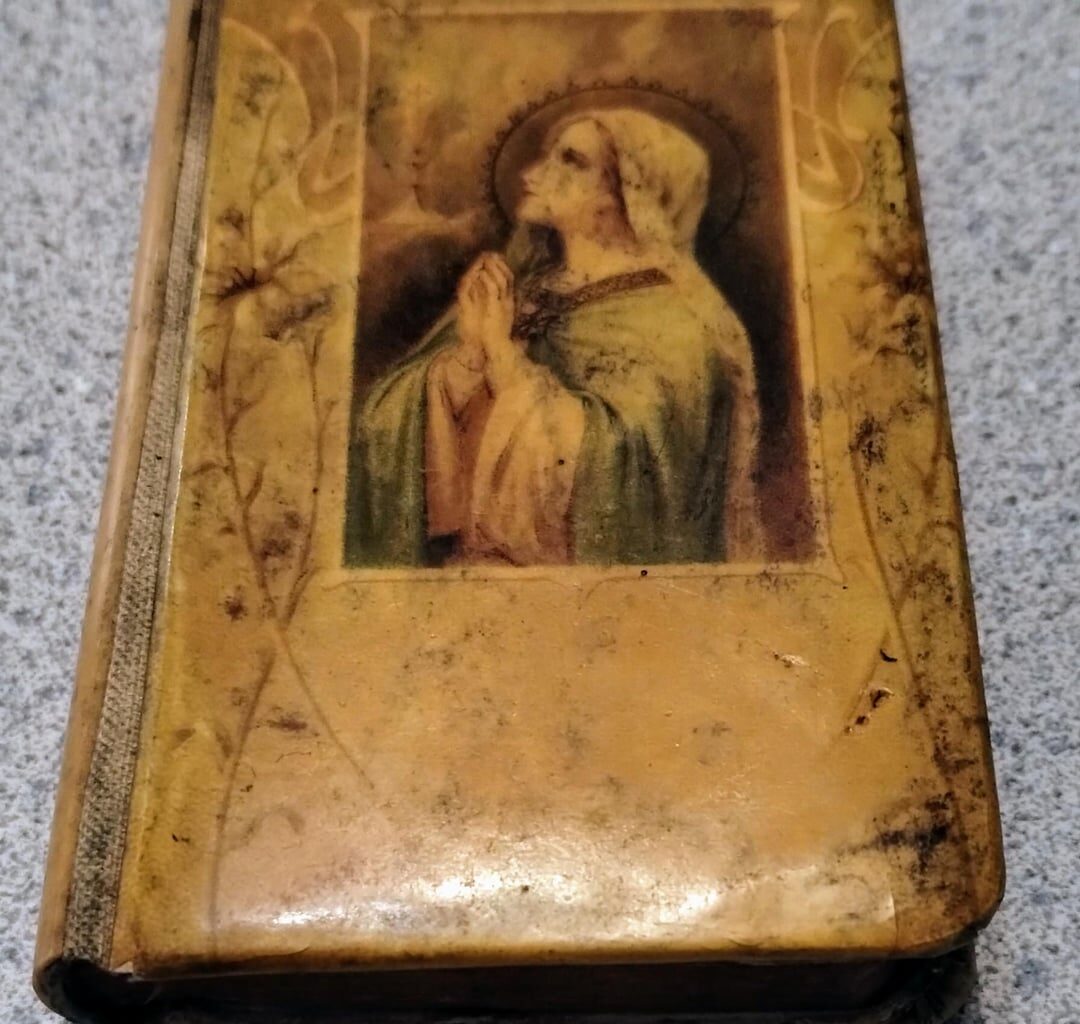
3 comments
Tornaci c’est Latin pour Tournai dans Hainaut. Je pense que les deux premières lignes sur la deuxième photo disent “St. Anne de Bellevue 1927”, quatre* ans après l’impression du livre.
Saint-Anne-de-Bellevue semble être un endroit dans Montréal. La troisième ligne pourrait être Leo Angell? Je pense que c’est peut-être le nom du propriétaire du livre d’origine peut-être anglo-saxonne[1] car le nom me ne semble pas très français.
“Can. cens. lib” doit dire que le livre était approuvé par des censeurs ecclésiastiques. Vous pouvez peut-être essaier de tracer ce Leo Angell dans les registres paroissiaux à Montreal mais là je n’ai aucune idée comment. Malheureusement l’imprimateur et les éditeurs ne sont pas mentionné.
Nota bene: vous pouvez aussi demander sur r/wallonia, les utilisateurs de r/belgium sont principalement flamand et néerlandophone. Peut-ête que quelqu’un de Tournai qui connaît un peu la patrimoine catholique de la ville le lise. Bonne chance!
[1] Sinon, cela pourrait aussi être tout simplement un nom anglicisé d’un quebécois ou un immigré belge. Aussi possible est que c’est un immigré Irlandais catholique.
It’s a “livret de messe”. So probably contains Roman Catholic liturgical texts and psalms, etc?
Also has “made in Belgium” on it. I doubt this object was produced in Belgium and then just exported. I would find it much more probable that the owners emigrated to Canada, and since Tournai is a city in french-speaking Wallonia it’s not a big surprise they went to Quebec. That time period had quite a lot of Belgians emigrating to the USA, Australia and Canada.
The “made in Belgium” makes this highly likely to be fake for me. Unless it has been added afterwards. There’s no way a Francophone printer in the ‘20s would have used English.
Comments are closed.